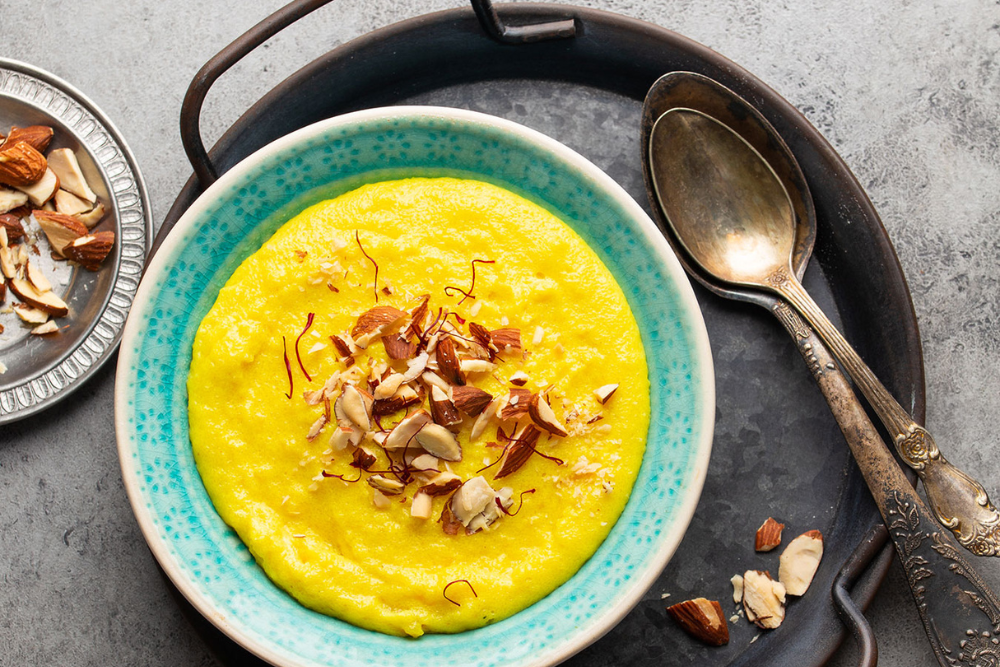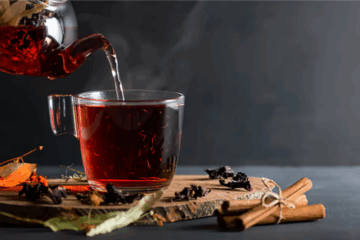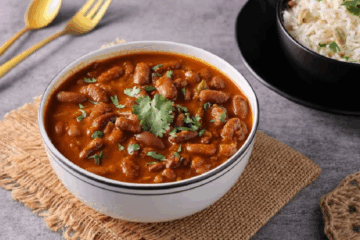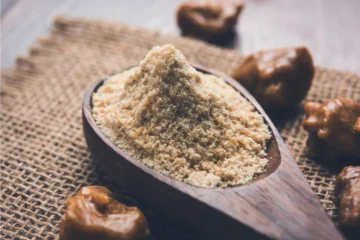Think hing (asafoetida) belongs only in savoury dals and curries? Think again! Our Hing-Spiced Kheer recipe redefines Indian fusion with the warmth of hing blended into a creamy, aromatic dessert. This blog answers common questions about using hing in desserts, its benefits, and tips for creating this unique recipe at home.
Will hing overpower the sweetness or taste strange in a dessert like kheer?
Short Answer: No, when used in small amounts, hing adds warmth and depth without overpowering the dessert’s sweetness.
Long Answer:
- Hing’s nature: Hing has a pungent smell when raw, but when cooked properly, it blends into dishes, lending a deep umami flavour.
- In desserts: Just a pinch of hing in ghee, used as a tempering base, gives kheer a slightly earthy depth that complements cardamom, saffron, and nuts.
- Balance is key: The trick is using less than 1/8 teaspoon for a family-sized pot of kheer—enough to enhance, not dominate.
- Result: It won’t taste strange; instead, it creates a rich, layered flavour that pairs beautifully with creamy textures and sweetness.
What are the health benefits of hing when used in a dessert?
Short Answer: Hing supports digestion, reduces bloating, and adds Ayurvedic wellness even when used in sweets like kheer.
Long Answer:
- Digestive aid: Hing is known to reduce gas, promote bile flow, and stimulate digestive enzymes.
- Post-meal dessert: When added to rich desserts like kheer, it helps counter the heaviness of milk and sugar.
- Traditional benefits: In Ayurveda, hing balances the vata and kapha doshas, making it ideal for sweet, dairy-rich dishes.
- Immunity boost: Hing contains antioxidant and anti-inflammatory compounds, making even dessert a health-supportive choice.
Is the flavor kid-friendly, or is hing too strong for children’s palates?
Short Answer: Yes, if used lightly, hing in kheer is mild and can be enjoyed by children without strong aftertaste or spice.
Long Answer:
- Gentle on the palate: Children often enjoy creamy and subtly spiced desserts. When hing is properly bloomed in ghee, it softens and enhances the flavour without intensity.
- Nutty combo: Pairing hing with sweet flavours like cardamom, jaggery, or dry fruits ensures that children won’t even notice the spice—but will feel the benefits.
- Health bonus: It aids digestion in kids who often overindulge in sweets at festivals and celebrations.
- Tip: Start with less than a pinch of hing and increase only if desired—subtlety is key when serving kids.
What type of hing works best for sweet recipes—powdered or compounded?
Short Answer: Pure powdered hing works best for desserts, as it offers clean flavour without bitterness or additives.
Long Answer:
- Powdered hing: Ideal for sweet dishes because it is more refined and dissolves easily in ghee during tempering.
- Compounded hing: Often includes rice flour or gum arabic and may have a stronger taste—better suited for savoury dishes.
- Avoid bitterness: For dessert applications like kheer, pure powdered hing prevents the risk of a bitter aftertaste.
- Check labels: Choose high-quality, food-grade powdered hing, preferably organic, to retain balance in dessert flavours.
Are there other desserts where hing can be added for a fusion twist?
Short Answer: Yes, hing can enhance many Indian desserts like halwa, laddoos, and kachoris with a warming depth.
Long Answer:
- Fusion halwa: Try adding hing to sooji halwa or moong dal halwa for an earthy undertone that complements ghee and nuts.
- Laddoos: Hing pairs well with besan laddoo, enhancing nuttiness and aiding digestion after festive meals.
- Stuffed sweets: Add hing to the filling of dry fruit-stuffed gujiyas or dry fruit rolls for a twist.
- Baked fusions: Experiment with hing-infused syrup in baked rasmalai or milk cakes for Indo-western hybrids.
Hing-Spiced Kheer Recipe: A Sweet Fusion
| Ingredients | Quantity |
|---|---|
| Full cream milk | 1 litre |
| Basmati rice | 1/4 cup (soaked for 30 mins) |
| Sugar or jaggery | 1/3 cup |
| Cardamom powder | 1/2 tsp |
| Saffron strands (optional) | Few |
| Ghee | 1 tbsp |
| Powdered hing | A pinch (less than 1/8 tsp) |
| Chopped nuts (almonds, pistachios) | 2 tbsp |
Steps:
- Heat ghee in a pan, add a pinch of powdered hing and sauté for a few seconds.
- Add soaked rice and sauté lightly until aromatic.
- Pour in milk and simmer on low, stirring occasionally, for 30–35 minutes until thickened.
- Add sugar/jaggery, cardamom, saffron, and nuts. Stir well and cook for another 5–10 minutes.
- Serve warm or chilled, garnished with more nuts.
Conclusion: Why Try Hing in Desserts?
Hing in desserts might sound unconventional, but it opens a world of fusion flavours, especially when added mindfully to classics like kheer. With digestive benefits, mild warmth, and unique depth, hing transforms everyday sweets into something unforgettable. Whether you’re a home cook or a foodie explorer, this is one flavour twist worth trying.
Ready to Try Hing in Your Next Dessert?
Explore more Hingwala recipes and our range of pure powdered hing crafted for innovative kitchens. Spice your sweets with tradition and taste—only with Hingwala.





